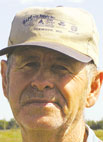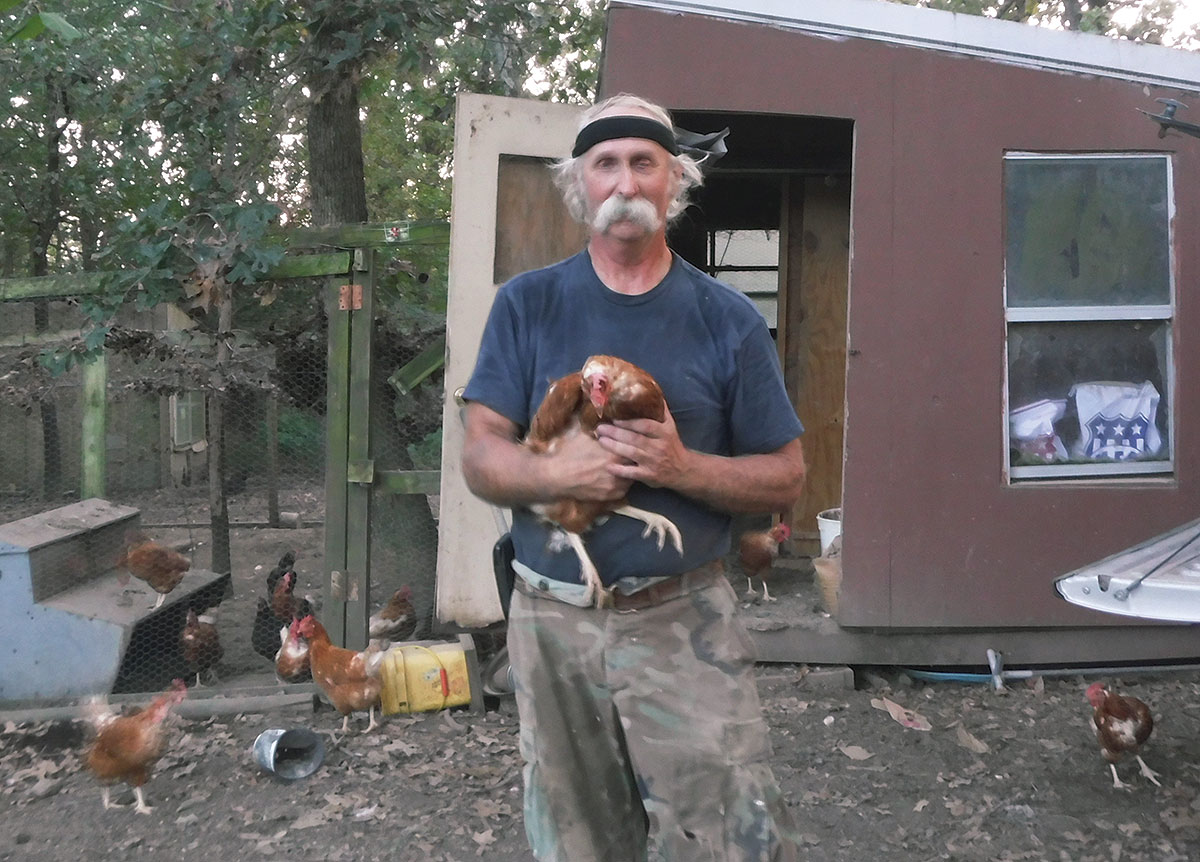
Cedar Springs Beefmasters Farm encompasses around 1,000 acres in Webster County near Marshfield, Mo. The farm is owned by Dr. Roger Holden. Dr. Holden lives in Springfield, Mo.
Taking care of the farm is T.J. Rainwater and farm manager Mike Galbreath. T.J. lives in Rogersville, Mo., and Mike lives on the farm.
T.J. became involved with Cedar Springs through his uncle, Charles Rainwater. T.J. explained, “When Doc (Dr. Holden) bought the farm, my uncle Charles still had cows and the farm. He had retired from Prime and had sold most of it, just condensing everything down. Doc and Charles got to be real good friends and worked out a deal amongst themselves.”
Mike Galbreath said he became involved with the farm through “coonhunting.” He explained, “Me and Charlie coonhunted together some. My wife showed dogs for Charlie and Edna. I was working at a big dairy in Lebanon, Mo. Charlie asked if I would like the opportunity to come here and try it and see how everybody got along.”
T.J.’s uncle, Charles, passed away two years ago. T.J. said, “There will be a Rainwater Beefmaster farm again, just not yet.”
T.J. has been farming for about 30 years. He said, “I’ve been farming since I was big enough to do anything. I’ve been around Beefmaster cattle for a little over 20 years.” He has been raising Beefmasters for seven years.
Altogether, there are 227 head of cattle on Cedar Springs Beefmasters Farm. T.J. said, “This breed came from my uncle, Charles. He had Rainwater Beefmasters Farm. We got Dr. Holden started with the breed. He saw it and liked it.”
When it comes to Beefmasters, T.J. said, “I like them for their disposition, their hardiness and their adaptability. They are a very hardy breed. They were bred for hot, dry South Texas weather.” That proved to be a plus this past summer.
When it comes to disposition, T.J. stated, “They’re a very calm breed. You can feed them out of your hand. If you have a bag of range cubes, you’d better look out. They know what that white bag is.”
He believes the Beefmaster’s disposition is their biggest asset. “They’re a low stress, easy-working cow. It’s less stress on us and less stress on the cow. Beefmasters just seem to have a lot better weight gain, which is definitely being noticed in the feedlots today.”
Mike said, “I’ve only been around them (Beefmasters) for three years. I come from mainly dairy situations. My personal opinion, the biggest drawback I see with these cows would be foot problems. Other than that, they carry all six essentials. A man couldn’t ask for a better cow.”
T.J. listed the six essentials as “heartiness, disposition, milking ability, calving ease, fertility and weight.”
Some farmers weaned calves earlier this year because of the drought conditions. Adjustments were also made at Cedar Springs Beefmasters. T.J. said, “We will wean 30 days early.”
The usual weaning weight, for them, is 550 to 600 pounds.
Mike added, “So far, from what we’ve seen, it’s not going to make that big of a difference in our weaning weights. Our calves have held real strong through all of this.”
Rotational grazing is something they like to utilize, but there was no rotational grazing at Cedar Springs this summer.
T.J. stated, “We put them in a field and started feeding hay about the middle of July. We set out the first bales on the 15th of July.”
They will have enough hay to get through the winter. T.J. said, “Normally we sell hay through the summer and then we will get a second cutting. We elected to keep all our hay this year just to see how the summer was going to turn out, and we’re glad we did.” He continued, “Now that we’re getting some rain and the grass is coming back, we can go back to rotating and eventually shut off the hay.”
Mike added, “We’ve got a few places where we’ll get a second cutting, but it will be late October or November. If the frost gets it, the cows get to bale it.”
When it comes to farming advice, T.J. said, “Basically, don’t sweat the small stuff. If you’re going to have them (cattle), you’re going to have things happen. I’ve seen a calf drown in two inches of water. I’ve seen a calf with a basketball head. That was kind of creepy.”







